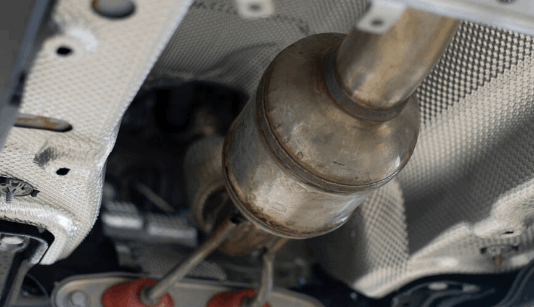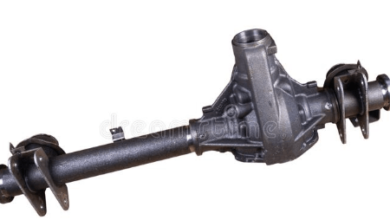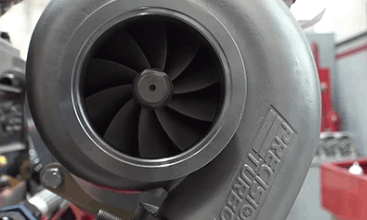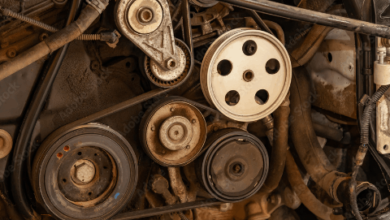How to Remove Catalytic Converter? Simple Steps to Replace It
Catalytic converters are very important parts of the automotive engine. They are responsible to decrease the harmful emissions from exhaust systems in general. And also sometimes, the replacement of the catalytic converter can be required. Here, you can find the general steps on how to remove the catalytic converter from your car. And how to deal with them.
Which Tools Do You Need?

Before starting the catalytic converter removal, you need to be sure that you have these tools;
- Adjustable wrench set: To remove the bolts that hold the catalytic converter in place.
- Hydraulic jack or stand: To lift the car to remove the catalytic converter.
- Penetrating fluid: This is generally required to remove the rust and corrosion on the bolt to make it much easier to deal with.
Simple Steps on How to Remove Catalytic Converter
First of all, the removal of the catalytic converter is not a hard thing. You need to have some specific tools and some familiarity with the general mechanics and fasteners. It is a part that does not have any specific thing in general like the complex parts of the engine. And you do not need to remove the additional parts to remove that part.
- First, you need to place your car in a safer place to remove the catalytic converter. The ground must be a stable and hard place to place the car and lift it. And you need to engage the emergency brake before starting the applications.
- And then you need to safely lift the vehicle completely. Probably lifting from the only backside will not be sufficient. Because you will need a good and spacious space to deal with the problem. The exhaust system is long and you will need space to deal with all the fasteners. Attach multiple jacks stands on each side of the vehicle. And lift the vehicle completely up. Make sure that you lifted enough to deal with the problem and slip below it completely.
- You need to take the required precautions to remove the catalytic converter. Wear your protective gloves and protective glasses.
- If you run your engine for a while before dealing with the exhaust system of your car, let the exhaust system cool down for 10 minutes.
- Find the exact location of the catalytic converter. The location of the converter is at the back side of the exhaust system. Follow the tailpipe, and you will see a cylindrical-shaped system that is attached to the middle of the exhaust system. This is the catalytic converter of your car.
- If you are driving a modern vehicle, there is probably an oxygen sensor attached to the catalytic converter. It is a very simple small attachment. You need to remove it by using a wrench. And also remove the cable connections of the oxygen sensor of your car.
- Once you replaced the oxygen sensor, you are ready to remove the catalytic converter. You just need to spray the penetrating liquid to make the removal of the bolts and nuts much more easy way. Because, they are probably rusted and corroded, and they are very hard to remove in general. This liquid will remove the rust on the bolts and make them very easy to remove in general.
- There are different kinds of bolts, straps, and nuts on the exhaust piping system that fix all of them to the bottom of the vehicle. You need to spot all the bolts and fasteners that connect the catalytic converter to the other systems. Locate all the bolts and start to remove them. You do not need to remove the bolts and straps that attack the other exhaust pipes in the car. You just need to remove the bolts of the catalytic converter of your car.
- If the catalytic converter is welded to the exhaust piping system of your car, you need to cut from the welded sections. You can use metal cutters or catalytic converter cutters to remove the welded catalytic converters in general. And it will be very easy like this.
As you see above, the answer to how to remove the catalytic converter is very simple. Most people are only searching for removal to increase the horsepower of their car. But also there must be important considerations on how to increase the horsepower in general.
How to Attach a New Catalytic Converter?
Also, you can follow these simple steps to attach a new catalytic converter to your car.
- First of all, you need to be sure that the catalytic converter system that you are using is the same as the previous system. And be sure that you are using an OEM part.
- Install the gaskets of the new catalytic converter to the connections of the pipes. And also include all the other parts such as springs and long bolts to their required places. If you are not sure where to attach these additional parts, it will be very useful to look at the user manual and instructions for the catalytic converter that you have.
- You can install the new catalytic converter into its place by attaching all the nuts and bolts to their places. So, it will be very easy to attach without any problem like this.
- Attach the oxygen sensor that you detached from the old system. Make sure that you make the required adjustments for the electrical connections.
- You need to test the catalytic converter if it is working properly. Run your car on idle, and hold a candle lit to the attachment sections of the catalytic converter if there are leaks or not on the system.
- And also, you can make another by attaching a pressure gauge in the place of the oxygen sensor. This will measure the back pressure on the exhaust system of your car. The back pressure must be a maximum of 1.25 psi in general.
- Another important test method is to listen to the weird sounds if they are coming from the exhaust system. Your car must create the same sound before the replacement.
So, these are the general steps that you need to apply how to remove the catalytic converter and how replace it with a new one.
Also, check if the check engine light is on after the operation. If the check engine light is on, it will be a better idea to run your vehicle for several miles to reset the check engine light.
Why Do People Remove Catalytic Converters?
There are different reasons why people remove these parts from their vehicles. These are the general reasons.
Increase in the Horse Power
Yes, the removal of catalytic converters will indeed increase the HP of the engine. The reason for it is the decrease in the total resistance of the exhaust gases. If we take a look at the structure of the catalytic converter, there are very small channels that the exhaust gases are passing through. These channels make it possible to decrease the bad gases on exhaust gases. So, the engine will consume more power to push the exhaust gases through the catalytic converters. If you remove them, the HP will increase by 10 -15 HP.
But, do not do that! It is very harmful to the environment the release of harmful emissions. And also, you may face bad penalties if they find that you deleted your catalytic converter.
Increased Gas Mileage
If the burden on the engine decreases, the gas mileage of the car increases. It is very easy math.
Engine Temperature Decreases
This is also another outcome of the removal of the catalytic converter. Because the load on the engine decreases, the engine temperature also decreases by a significant amount.
Drawbacks
- But we need to state that removal of the catalytic converters is illegal in most of the US states. The Environmental Protection Agency and Ministry of Transport have regulations about the hard penalties for those who remove the catalytic converters from their cars.
- Another important drawback is the increased bad noise coming from your exhaust system. Because another duty of the catalytic converter is to reduce the noise coming from the exhaust.
- And also you will not pass the MOT test to get a certificate to drive your car in open traffic. Your car will fail the emission tests.
Will a Car Run if the Catalytic Converter is Removed?
Yes. The catalytic converter is not a vital part to run the engine and car. The responsibility is to reduce the emissions and noise of the exhaust gases. Removal of it will not prevent any of the required processes to run an engine.
Can I Remove the Catalytic Converter and Run a Straight Pipe?
Probably yes. But it is not a good idea for the environment. You will pollute the environment in a much worse way and we do not recommend you do it.
Conclusion on How to Remove Catalytic Converter
Here we tried to explain all the required technical details about the catalytic converter removal. And you know all the general logic of the removal in general. If you have additional comments and questions about how to remove the catalytic converter, please leave them below. Your precious feedbacks are very important to us.
Check the other related topics below;
Signs of Stolen Catalytic Converter – What to Do?
Do Diesels Have Catalytic Converters? Quick Answer
Is Aftermarket Catalytic Converter Loud? OEM and Mufflers
References;



